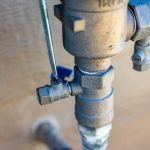 Backflow Preventer: Protecting Water Supply from Contamination
Backflow Preventer: Protecting Water Supply from Contamination
Water contamination is a serious issue that can have severe consequences for public health. Contaminants such as bacteria, chemicals, and other pollutants can enter the public water supply through various means.
One of the most common ways that water can become contaminated is through a backflow event. Backflow happens when contaminated water flows back into the public water supply, creating a risk of contamination.
In this post, we’ll dive deeper into what backflow is, how it occurs, and why a backflow preventer is an essential device in keeping the water supply safe from contamination.
What is Backflow?
Backflow is the reversal of the flow of water in a plumbing system due to a sudden drop in water pressure. This reversal can cause contaminated water from a non-potable source (such as a swimming pool or irrigation system) to flow back into the public water supply.
Backflow can occur in various ways, such as when a fire hydrant is opened, a water main breaks, or if there’s a sudden increase in demand in an area. It can also occur due to cross-connections in plumbing systems, which is where the public water supply and a non-potable water supply are connected.
Why is Backflow a Concern?
Backflow is a significant concern because it can lead to water contamination, which can result in illnesses and even death. Contaminated water can contain harmful bacteria, chemicals, and other pollutants that can cause serious health problems.
In addition, backflow can also cause damage to plumbing systems and appliances due to the influx of contaminated water. The financial costs of repairing damage caused by contaminated water can be significant.
What is a Backflow Preventer?
A backflow preventer is a device that is designed to protect the public water supply from contamination due to backflow. The device works by preventing water from flowing in the reverse direction, keeping the water supply safe.
Backflow preventers come in various types and sizes, depending on the application and level of protection required. Still, they all work based on the same principle of creating a physical barrier that prevents the reversal of water flow.
Types of Backflow Preventers
1. Atmospheric Vacuum Breaker (AVB)
An Atmospheric Vacuum Breaker is one of the simplest and most affordable backflow preventers. It’s essentially a one-way valve that allows water to flow out but prevents it from flowing back in.
AVBs are commonly used in irrigation systems and other low-level hazard applications. However, they are not suitable for high-level hazard areas such as hospitals or industrial facilities.
2. Pressure Vacuum Breaker (PVB)
A Pressure Vacuum Breaker (PVB) is a more complex backflow preventer that creates a physical barrier to prevent backflow. It has two check valves and an air inlet valve that prevents backpressure and backsiphonage.
PVBs are commonly used in commercial and industrial applications, but they can also be used in residential settings.
3. Double Check Valve Assembly (DCVA)
A Double Check Valve Assembly is a more sophisticated backflow preventer that is commonly used in high-level hazard settings. It has two check valves that prevent backflow and a shutoff valve that can be manually operated.
DCVAs are commonly used in hospitals, laboratories, and industrial settings, where significant contamination risks exist.
4. Reduced Pressure Zone Device (RPZD)
A Reduced Pressure Zone Device (RPZD) is the most advanced backflow preventer, and it provides the highest level of protection to the public water supply. It has two independently operating check valves, and a relief valve that acts as a secondary barrier in case of a backflow event.
RPZDs are typically used in the most hazardous settings, such as chemical plants, refineries, and nuclear power plants.
Installation and Maintenance of Backflow Preventers
Backflow preventers must be installed and maintained correctly to ensure they are functioning correctly. It’s essential to have a licensed plumber install the device and perform annual inspections and maintenance.
Annual inspections and maintenance are vital to ensure that the backflow preventer is operating correctly and providing the necessary protection to the water supply. It’s essential to clean and check the device for any signs of wear or damage and make any necessary repairs or replacements.
Conclusion
Backflow is a significant concern that can result in water contamination, which can have severe consequences for public health and safety. A backflow preventer is an essential device for protecting the public water supply from contamination caused by backflow.
It’s essential to have the right type of backflow preventer installed, depending on the level of hazard and protection required. It’s also crucial to have the device installed and maintained correctly to ensure it’s functioning correctly.
By taking the necessary precautions to prevent backflow, we can ensure that our water supply remains safe and accessible for future generations. So, if you haven’t already, consider implementing a backflow preventer in your plumbing system to protect your community’s water supply from contamination.
Got questions? Let us know! Contact our team of professional septic pumpers here at Alvarado Pumping Septic Service today to learn more or to schedule an appointment!